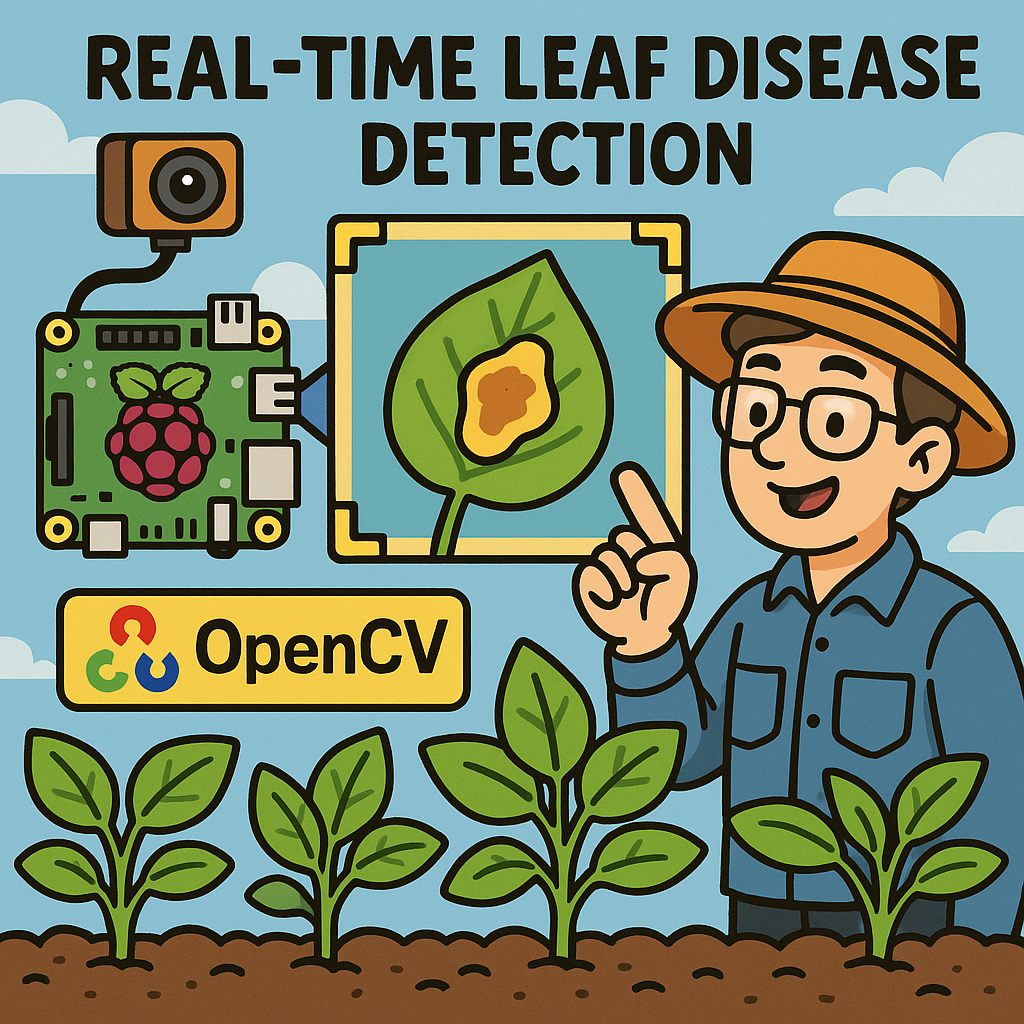Introduction to Leaf Disease Detection in Precision Agriculture
Precision agriculture has revolutionized farming, enabling farmers to make data-driven decisions that optimize crop yield and health. Among the challenges faced in this domain, leaf diseases pose a significant threat, as they can lead to reduced yield and increased costs. Detecting these diseases early is crucial, and here, leveraging a Raspberry Pi in conjunction with OpenCV presents a compelling solution.
Understanding the Hardware: Raspberry Pi as a Cost-Effective Solution
The Raspberry Pi, a small, affordable single-board computer, has gained popularity in various applications, including agriculture. Its compact size, coupled with sufficient processing power, makes it ideal for deployment in the field. For leaf disease detection, the Raspberry Pi can be equipped with a camera module for image capture, alongside necessary peripherals such as batteries and sensors.
Choosing the right model is essential; the Raspberry Pi 4 Model B, with its quad-core processor and up to 8GB of RAM, provides adequate performance for real-time image processing. Additionally, its GPIO pins allow for integration with environmental sensors, which can provide contextual data to enhance disease detection algorithms.
Firmware and Software Setup: OpenCV for Image Processing
OpenCV (Open Source Computer Vision Library) is a powerful tool for image processing and computer vision tasks. To effectively use it on the Raspberry Pi, you’ll need to install the library along with Python, which offers a user-friendly interface for handling image data.
The first step in leveraging OpenCV for leaf disease detection involves capturing images of leaves. The camera should be positioned to minimize glare and shadows, ensuring consistent lighting conditions. Once images are captured, the preprocessing phase begins, where we might apply techniques like resizing, color normalization, and noise reduction. This is critical, as the quality of input images directly influences the accuracy of the detection algorithms.
Algorithm Design: From Image to Detection
At the core of our solution lies the algorithm responsible for identifying leaf diseases. Typically, Convolutional Neural Networks (CNNs) are employed for image classification tasks due to their effectiveness in feature extraction. However, training a CNN from scratch requires substantial datasets and computational resources, which might not be feasible on a Raspberry Pi.
To circumvent this, transfer learning can be utilized. Pre-trained models, such as MobileNet or Inception, can be fine-tuned on a smaller dataset of diseased and healthy leaves. This approach reduces training time and resource requirements significantly. Moreover, leveraging libraries like TensorFlow Lite allows us to deploy these models efficiently on the Raspberry Pi, enabling real-time inference.
Trade-offs in Real-World Design
While designing a real-world system for leaf disease detection, several trade-offs must be considered. One major concern is the balance between accuracy and processing speed. A complex model may achieve higher accuracy but could result in slower inference times, which is not ideal for real-time applications. Simplifying the model or reducing input image resolution can improve speed but may impact detection accuracy.
Another critical aspect is the environment where the system will be deployed. Factors such as ambient light, camera positioning, and the angle of leaf capture can affect image quality. Thus, creating a controlled environment or using additional sensors to gather contextual data (like humidity and temperature) can enhance the algorithm’s performance.
Challenges in Deployment and Solutions
Deploying a Raspberry Pi-based leaf disease detection system comes with its set of challenges. Connectivity in rural areas can be unreliable, making it difficult to send images or data to a central server for further analysis. Implementing local data processing reduces dependency on network availability. Additionally, the system needs to be robust enough to withstand outdoor conditions; thus, housing the Raspberry Pi in a weatherproof enclosure becomes necessary.
Moreover, the computational limitations of the Raspberry Pi may pose challenges in processing large datasets. To address this, batch processing can be employed — capturing multiple images and analyzing them sequentially can optimize performance without sacrificing accuracy.
Conclusion: The Future of Real-Time Leaf Disease Detection
By integrating Raspberry Pi and OpenCV, we are paving the way for innovative solutions in precision agriculture. As technology advances, we can expect improved algorithms and hardware that will enhance the efficiency and accuracy of leaf disease detection systems. With ongoing research and development, the potential for these systems to transform agricultural practices is significant, making them an exciting area for engineers and developers to explore.



